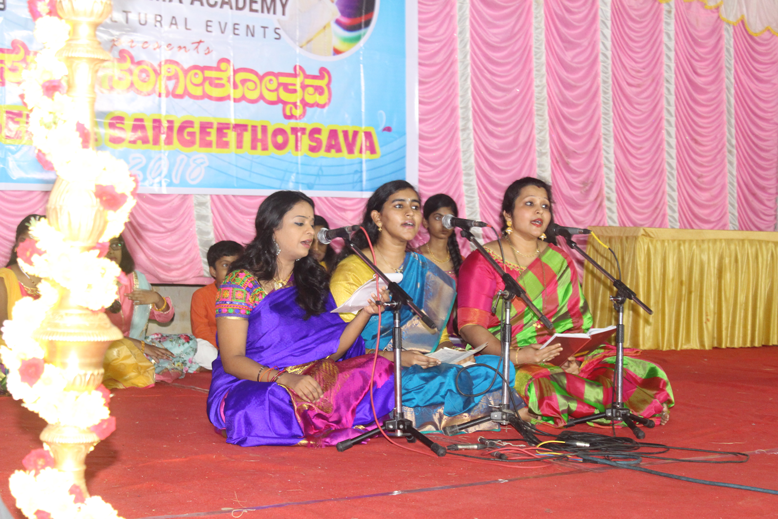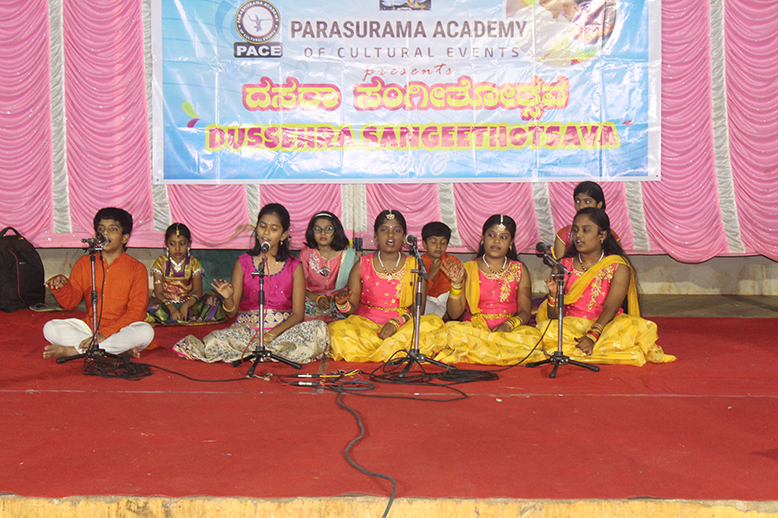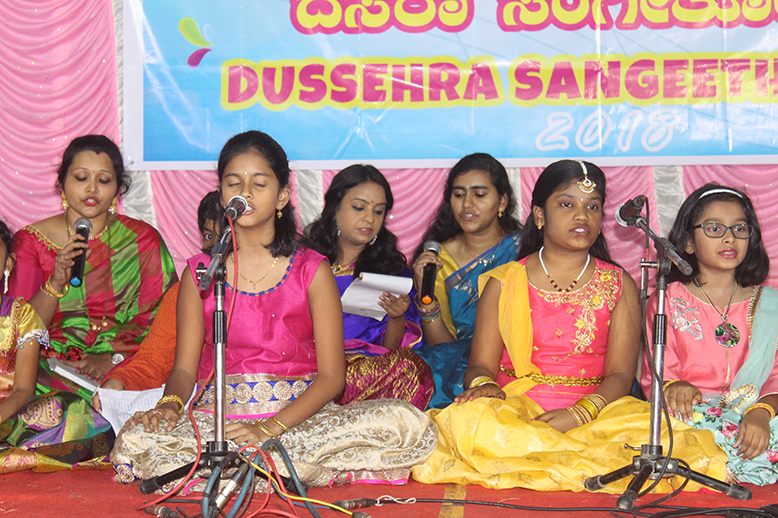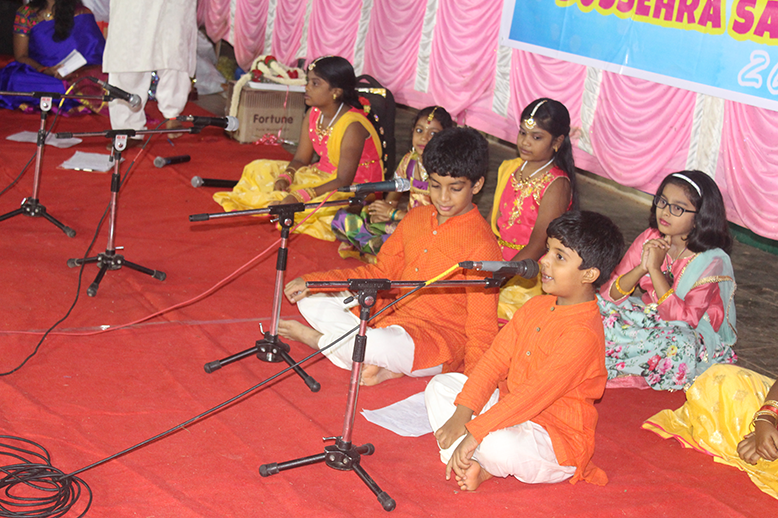CARNATIC MUSIC (VOCAL)
ORIGINS, SOURCES, AND HISTORY
Like all art forms in Indian culture, Indian classical music is believed to be a divine art form which originated from the Devas and Devis(Gods and Goddesses) and is venerated as symbolic of nada brahman. Ancient treatises also describe the connection of the origin of the swaras (notes), to the sounds of animals and birds and man’s effort to simulate these sounds through a keen sense of observation and perception. The Sama Veda, which is believed to have laid the foundation for Indian classical music, consists of hymns from the Rigveda, set to musical tunes which would be sung using three to seven musical notes during Vedic yajnas. TheYajur – Veda, which mainly consists of sacrificial formulae, mentions the veena as an accompaniment to vocal recitations. References to Indian classical music are made in many ancient texts, including epics like the Ramayana and Mahabharatha. TheYajnavalkyaSmrithi mentions


vīṇāvādanatattvajñaḥśrutijātiviśāradaḥtālajñaścāprayāsenamokṣamārgaṃniyacchati, “The one who is well versed in veena, one who has the knowledge of srutis and one who is adept in tala, attains liberation without the doubt.” Carnatic music is based as it is today on musical concepts (including swara, raga, and tala) that were described in detail in several ancient works, particularly the Bharata’sNatya Shastra and Silappadhikaram byIlangoAdigal.
Owing to Persian and Islamic influences in North India from the 12th century onwards, Indian classical music began to diverge into two distinct styles — Hindustani music and Carnatic music. Commentaries and other works, such asSharngadeva’sSangithRathnakara, further elaborated on the musical concepts found in Indian classical music.
By the 16th and 17th centuries, there was a clear demarcation between Carnatic and Hindustani music; Carnatic music remained relatively unaffected by Persian and Arabic influences. It was at this time that Carnatic music flourished in Vijayanagara, while the Vijayanagara Empire reached its greatest extent.PurandaraDasa, who is known as the “father of Carnatic music”, formulated the system that is commonly used for the teaching of Carnatic music, Venkatamakhin invented and authored the formula for the Melakartha system of raga classification in his Sanskrit work, the ChaturdandiPrakasika (1660 AD).[Govindacharya is known for expanding the melakarta system into the sampoorna raga scheme – the system that is in common use today.
Carnatic music was mainly patronized by the local kings of the Kingdom of Mysore, Kingdom of Travancore, and the Maratha rulers of Tanjore in the 18th through 20th centuries. Some of the royalty of the kingdoms of Mysore and Travancore were themselves noted composers and proficient in playing musical instruments.

With the dissolution of the erstwhile princely states and the Indian independence movement reaching its conclusion in 1947, Carnatic music went through a radical shift in patronage into an art of the masses with ticketed performances organized by private institutions called sabhas. During the 19th century, the city of Chennai emerged as the locus for Carnatic music.

PACE AND CARNATIC MUSIC
PACE conducts Carnatic Music (Vocal) classes at Whitefield Bangalore. Our Highly trained Music teachers have a passion for Indian classical music and they are proficient in training all types of students. Our unique training system helps students to acquire high-level knowledge and to be confident. The overcome their stage fear and become completely confident to perform on stages.
We conduct stage programs often that helps students to be efficient and proficient in this field. Our trainers are proficient in teaching and approach students with a unique psychologic way that helps the student to have a passion for classical music and makes them professionals.
WANT TO START RIGHT NOW?
LEARN MORE ABOUT OUR CLASSES

ABOUT US
Parashurama Academy of Cultural Events (PACE) – established in 2010 – with the aim of promoting different forms of arts and cultural events in and across Karnataka and make the benefits of these art forms available for people lives in Karnataka. Currently PACE conduct classes for Kalaripayattu, Karate and Carnatic classical music (Vocal). Yoga, Musical instruments and different forms of dances are in plan and will be started soon.
